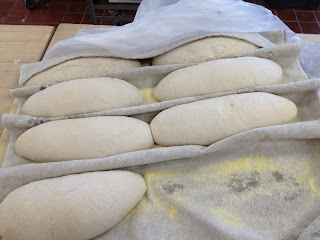Today, I decided to make these at home, except (you see what's coming, don't you?)...
Yes, I had no bananas. Sorry. I warned you.
Meanwhile back at the point....I had to improvise. So, with apologies to Morgan, here's my version:
Ingredients
1 cup Quinoa, uncooked
2 cups water
2 cups flour (about 1/3 of total amount as whole wheat)
1 1/2 teaspoon Baking Powder
1/4 teaspoon Baking Soda
1 teaspoon Cinnamon
1/4 teaspoon Ground Cardamom
1 teaspoon Salt
1/2 cup Walnuts, chopped
8 oz. applesauce
1/4 cup Peanut Butter
1 large Egg
1/4 cup Light Brown Sugar
2 tablespoons Honey
1/2 cup fat free milk
Directions
- Preheat the oven to 350 F.
- Prepare your muffin tins. I use a baking spray.
- Cook quinoa as per directions on the package. The brand I use needs 2 cups of water to cook one cup of uncooked quinoa.
- While the quinoa is cooking, prepare your dry ingredients:
- Whisk together the flour, salt, baking powder, baking soda, cinnamon, cardamom and walnuts. Set aside.
- In a separate bowl, combine the wet ingredients:
- Applesauce, peanut butter, brown sugar, egg, honey, and milk. I used my Kitchen Aid mixer.
- When quinoa is done, let cool and add to the wet ingredients.
- Add the dry ingredients to the wet ingredients and mix till combined.
- Scoop into muffin tins.
- Bake 25 - 30 minutes.
- When the muffins have finished cooking, cool in the times for 5-10 minutes, then transfer out of tins to wire rack to cool completely.
Morgan - thanks for the inspiration! These are delicious!


















